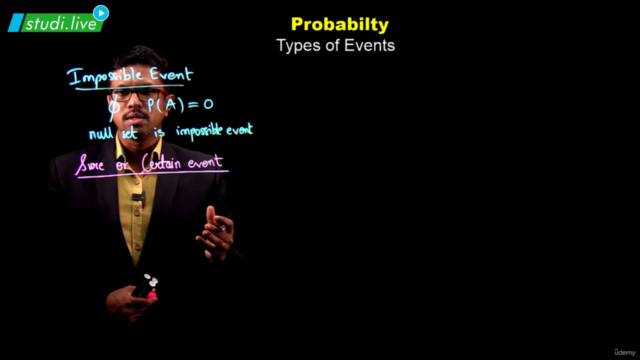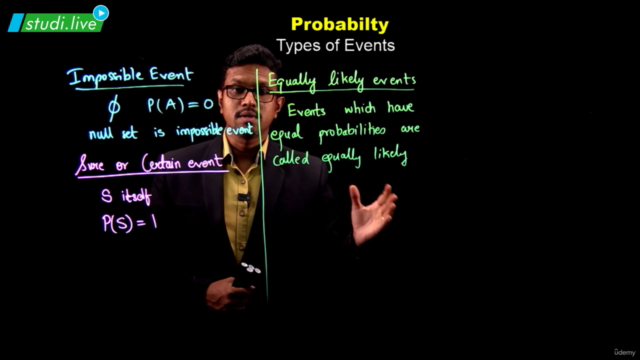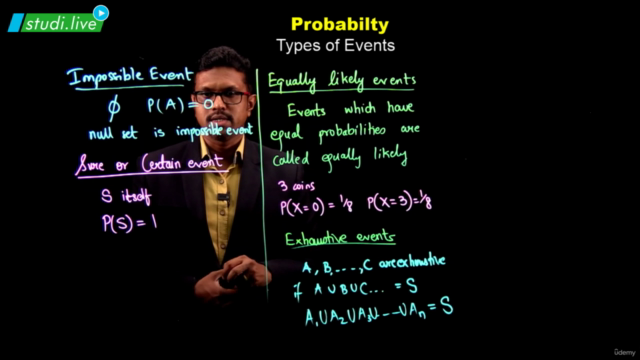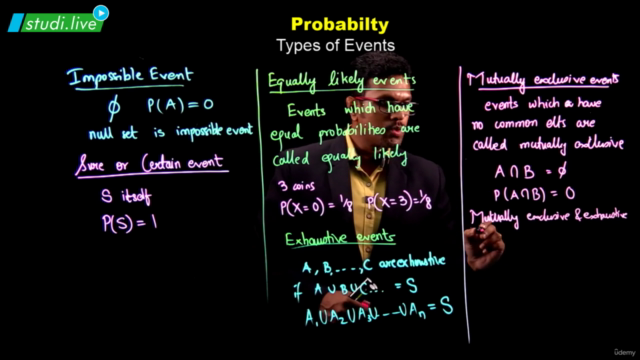Applied Mathematics - Probability & Statistics

Why take this course?
🌟 Course Title: Applied Mathematics - Probability & Statistics for Board and Competitive Exam Aspirants
Headline: Master the Essentials of Probability & Statistics for State Board, CBSE, ICSE, IGCSE, MHT-CET & NEET Exams!
Probability Module:
🚀 Understanding Probability:
-
Random Experiments:
- Learn about the outcomes and what constitutes a sample space.
- Dive into the concept of sample spaces using sets.
-
Events & Their Properties:
- Discover how events occur within an experiment, including 'not', 'and', and 'or' events.
- Understand the difference between exhaustive and mutually exclusive events.
- Explore the axiomatic approach to probability and its connection with earlier class theories.
-
Probability Calculations:
- Master the art of determining the probability of an event, including 'not', 'and', and 'or' events.
- Learn how to calculate the probability of complex events using the axiomatic approach.
- Grasp the concept of equally likely outcomes and compute probabilities in equal sample spaces.
-
Probability Rules:
- Get familiar with formulas for calculating combined probabilities, like P(A or B) and P(not A).
Statistics Module:
📊 Data Analysis & Interpretation:
-
Measures of Dispersion:
- Explore key measures such as range, mean deviation, variance, and standard deviation.
-
Frequency Distributions:
- Learn to analyze frequency distributions and understand the importance of having equal means but different variances.
-
Graphical Representation:
- Master presenting data through bar graphs, histograms, and frequency polygons.
-
Central Tendencies:
- Understand the three measures of central tendency: mean, median, and mode.
- Learn how to calculate each measure for ungrouped data.
- Discover the significance of class-marks when plotting frequency polygons.
Summary:
Probability:
In this chapter, you will gain a comprehensive understanding of probability theory:
- We examined the foundational concepts of probability, including sample spaces and events.
- We explored the probabilistic nature of real-world phenomena and learned how to express these in mathematical terms.
- We studied the properties of events such as impossibility, certainty, complementary events, and conditional probability.
- We applied the axiomatic principles to solve complex problems involving compound events.
- We learned how to calculate probabilities for different scenarios using the axiomatic approach, including the significance of equally likely outcomes.
Statistics:
This chapter introduces you to the fascinating world of statistics and data analysis:
- We defined what constitutes data and explored the importance of statistics in analyzing this data.
- We learned various methods for presenting data graphically, enhancing its interpretability.
- We delved into the three primary measures of central tendency – mean, median, and mode – and how they differ from one another.
- We discovered the practical applications of these measures in analyzing ungrouped data.
- We understood the role of class-marks when constructing frequency polygons and their significance in statistical analysis.
By completing this course, you will be well-equipped with a solid foundation in probability and statistics, essential skills for excelling in board and competitive examinations. Get ready to tackle complex problems with confidence! 🚀📚
Course Gallery




Loading charts...